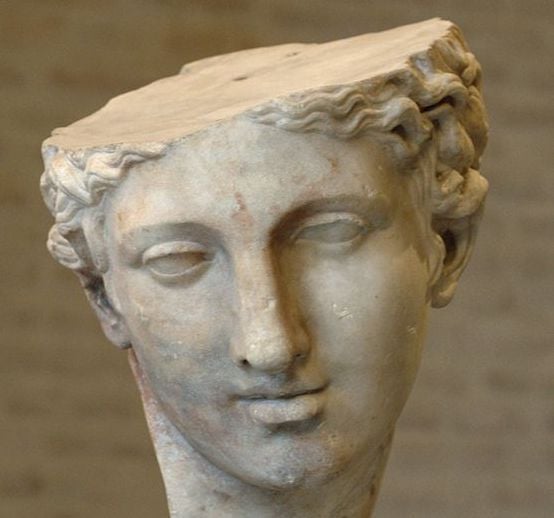
Theano of Crotone, an ancient Greek philosopher and mathematician in her own right, is often referred to as the wife of Pythagoras.
Many experts believe Theano, who lived in the 6th century BC, to be the first known woman mathematician, although some argue that she may actually be a composite figure of two separate women mathematicians.
Unfortunately, not much is known about Theano’s life. Some sources claim that she was born and raised on the island of Crete and was the daughter of Pythonax, while others claim she was from the Greek colony of Crotone in modern day Italy, and that her father was a philosopher named Brontinus.
Other ancient texts assert that she was the wife of famed mathematician Pythagoras, and others claim she was married to Brontinus, not his daughter.
Those who believe she was married to Pythagoras, one of the most important ancient Greek philosophers and mathematicians, state that the couple had four children–three daughters, Damo, Myia, and Arignote, and a son, Telauges.
Besides wife, Theano was a student of Pythagoras
The Greek philosopher and mathematician Pythagoras was born on Samos to an aristocratic family in 570 BC. He came from the house of Agaios, who was the founder of the colony of Samos.
His father, Mnesarchus was an engraver of precious stones. However, his early life is clouded by mystery, with modern scholars disagreeing about his education and influences.
It is said that Pythagoras was of exceptional beauty and many considered him to be the son of Apollo, who was patron god of philosophers, among others.
Around 530 BC the Greek philosopher traveled to Crotone and founded a school. The Pythagoras schools’ initiates were sworn to secrecy and lived a communal, ascetic life.
It is likely at his school where Pythagoras met and married Theano, who was likely a student. Notably, Pythagoras allowed women to study at his school, which was incredibly rare at the time.
Pythagoras’s contemporaries wrote that the mathematician did not discriminate against women based on their gender, and even praised his female students for inspiring their male classmates.
According to ancient sources, the philosopher’s school once had a total of 300 students, around 30 of whom were women. The three basic criteria for Pythagoras to accept someone in his school were wisdom, justice and bravery. He imposed a strict examination on those young people who asked him to become members of the school.
The huge house in which he taught in Crotone was called Oimakoion. In this organization property and knowledge were considered common. Any discovery was not attributed to a specific member but to all.
The Pythagorean School had a very conservative and strict code of conduct. The students had to keep the teachings and theories secret and if that did not happen it could even cost them their lives, it is said.
Despite the fact that discoveries made at the school were attributed to all of the students, there are several breakthroughs that have been linked to Theano specifically, including the Golden Mean and Golden Ratio.
Pythagoras died around 495 BC in Metapontum, Lower Italy, starving himself for 40 days because of his grief over the persecution of the Pythagoreans.
After his death, sources state that Theano, who was much younger than her husband, continued to run the Pythagorean school in Crotone until her death in the 5th century.
The school stayed open for nearly 200 years after her death, helping Pythagorean philosophy and mathematics spread throughout the Mediterranean.
A number of treatises and theories have been linked to Theano, including: “Pythagorean Apophthegms,” “Female Advice,” “On Virtue,” “On Piety,” “On Pythagoras,” “Philosophical Commentaries,” and “Letters,” but it is unclear whether or not these texts were actually written by the ancient female mathematician or not.
Despite being most famous as a mathematician and philosopher, Theano was also known to explore themes related to medicine, physics, and even psychology.
See all the latest news from Greece and the world at Greekreporter.com. Contact our newsroom to report an update or send your story, photos and videos. Follow GR on Google News and subscribe here to our daily email!



